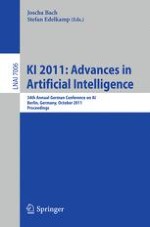2011 | Book
KI 2011: Advances in Artificial Intelligence
34th Annual German Conference on AI, Berlin, Germany, October 4-7,2011. Proceedings
Editors: Joscha Bach, Stefan Edelkamp
Publisher: Springer Berlin Heidelberg
Book Series : Lecture Notes in Computer Science
